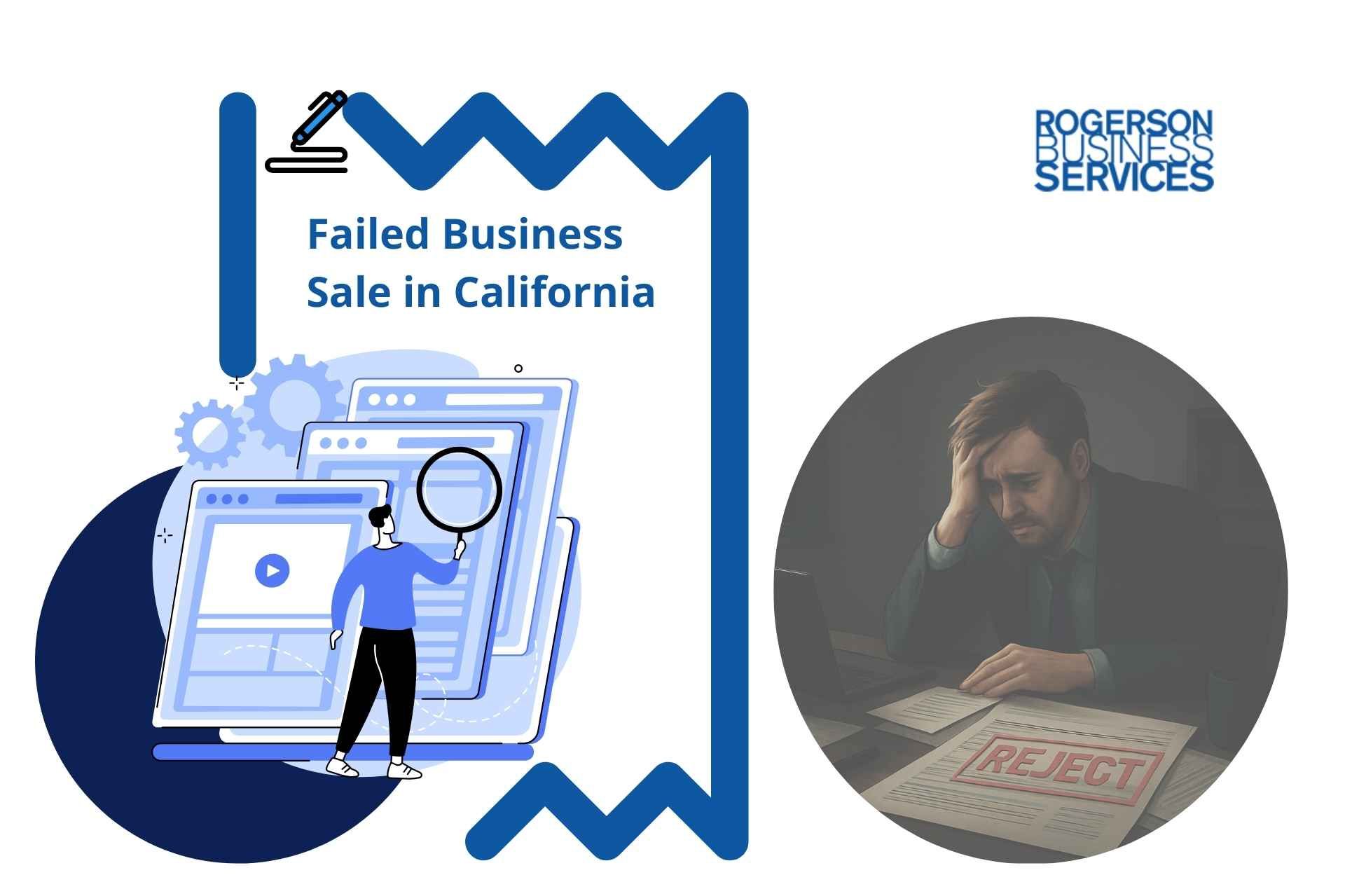How to Calculate the Value of a Business for Sale
Calculate Business Value

When you want to sell your business, the first of many steps is to calculate business value. You don’t have to be a business appraiser or an accountant to do it, but there are important concepts to understand, so you are comfortable with the process and the outcome.
What’s important is to have a strategy. Selling a business is a complex process, and without an in-depth plan, you can leave money on the table. Understanding the steps it takes and getting assistance from the right professionals will help you avoid this loss.
With the assistance of a business
M&A Advisor, you can sell your business to strategic and
Private Equity
Group buyers or PEGs in the lower middle market business sector. First, you will have to determine and understand the steps of selling a business:
- Define your reasons for leaving and how you will leave.
- Determine the value of your business.
- Increase your business value as much as possible before you sell it.
- Organize all relevant financial statements and business details.
- Find buyers and qualify those capable of purchasing the business.
- Reach an agreement with the buyer.
- Sign all necessary documentation.
- Transition the business to its new owner.
The Value of your Business
Most business owners have a number in their heads of what they think their business is worth. However, many times, the business owner will have it wrong because they do not have the training, which is not part of their expertise.
Also, bear in mind that a qualified and motivated buyer will have their own opinion. If a buyer needs to get finance from a third party, the lender will also have an opinion which they will confirm as part of their loan underwriting process.
There are three ways you can get a report on the value of your business.
Broker Opinion of Value
Also known as a Broker’s Price Opinion (BPO), a Broker’s Opinion of Value involves a licensed M&A Advisor or broker coming in to do a third-party evaluation of your business to find the Most Probable Selling Price (MPSP).
They do so by using market data, the financial statements of your business, analyzing costs and assets, and researching and comparing your business's income against what businesses have sold in the industry of your business.
As part of the Broker's Opinion of Value, they will use different approaches to value a business. There are only three approaches, and these are:
- Income approach
- Market approach
- Asset approach
Conclusion of Value or Short Report
For more formal situations or valuations that a court of law is not using, you may require a deeper analysis of the business and what is happening in the business industry. This report is more detailed than a BOV.
Business Appraisal or Full Report
For legal transactions and litigation, you will need a complete report of your business. This is called a business appraisal or full report and is usually in response to demands from the IRS or a court of law, such as divorce, etc.
Beyond the value of your business, it also details the calculations used to determine that value and the steps taken to make those calculations.
The person who performs this appraisal needs to comply with both the
Uniform Standards of Professional Appraisal Practice
of the Appraisal Foundation (USPAP) and the
Business Appraisal Standards
of the Institute of Business Appraisers for their appraisal to hold any kind of authority.
Are you curious to see a business appraisal or full report sample? Download a copy/sample for free.
Calculate Business Value
Now that you know about the different business valuation reports, let’s look at the best ways to calculate the business value. Your M&A advisor will handle this entire process, but to get the process started, they will need the following documents:
- The tax returns of the business for the last 3 or 4 years.
- A current Year To Date (YTD) Profit and Loss for the business.
- A recent Balance Sheet.
The appraiser will have questions of the business owner as they have knowledge that is an important part of the business value.
Step One: Calculate the SDE or EBITDA of the Business
The first part of calculating the business value is determining the cash flow or Net Income the business is generating for the last 3 or 4 years. Your M&A Advisor will do this step for you as it must be accurate, or the business valuation will be wrong.
With the cash flow or Net Income of the business determined, the M&A Advisor will use this to calculate the all-important
Seller's Discretionary Earnings
(SDE) or
Earnings Before Interest, Tax, Depreciation, and Amortization
(EBITDA.)
Do you want a free copy of the 7 steps to value a business guide? Get started or download the first step.
Step Two: Do At Least Three Calculations Using Different Methods
With the SDE or EBITDA identified, the M&A Advisor will then use the approaches described earlier, Income approach, Market approach, or Asset approach to come up with at least calculations, so they guide the value of the business. It would be incorrect to apply just one or two methods as this also could distort the final value of the business.
Step Three: Determine the Final Business Valuation
After the M&A Advisor has done at least three calculations, the final business value is determined. This includes putting weight on each calculation as the M&A Advisor may consider one valuation method being more relevant than another.
For example, the valuation method I think is one of the more important methods is the Market approach. This method looks at what other businesses in the same industry have previously sold. That is, if the business is a manufacturing business, it makes sense to see what other manufacturing businesses have sold over the years that generate about the same gross revenue and SDE or EBITDA.
Typically the M&A Advisor needs to buy this privately held database of information as it is not publicly available.
Business Valuation - Get the Best Selling Price for your Company
In addition to the Market method, here are six different methods to calculate the value of a business. There are others, but be careful which ones are used as the wrong valuation method can distort or provide an incorrect final business value. Also, each has its advantages depending on the type of business you own or, as explained below, some of these methods should only be used under certain circumstances.
Market Capitalization
This business value calculator involves taking a company’s stock shares and using them to determine the business value. To calculate it, you multiply the number of stocks owned on the market by their value.
For example, if you have 100 stocks outstanding and they’re valued at $1 per share, then your company would be worth $100 using this method.
Earnings Multiplier
This method compares future earnings to cash flow to determine a company’s value based on profit. It also accounts for interest rates and future investments consistent with the company’s current model.
Discounted Cash Flow Method
The Discounted Cash Flow (DCF) method is the same as the Earnings Multiplier. Still, it takes inflation into account and projects the business's future earnings to suggest its current value. Inflation will affect a company’s value, so this is a more specific depiction of a company’s future value.
Times Revenue Method
For businesses with significant revenue streams for their market, this might be one of the methods of finding the value of the business. It is typically used only by companies with a large gross revenue, say over $50 million per year, or a publicly-traded company. A business does not typically use it in the Lower Middle Market or Main Street.
The calculation in this method is to take revenue during a certain period (one year, six months) and multiply that by various market factors. After these calculations, you will have a value based on your revenue (i.e., 5X revenue or 0.5X revenue).
The Book Value
The book value of your company is one of the more straightforward methods for finding business value. You can find it by subtracting your total liabilities from the company’s assets. Hopefully, this method is not used to calculate the value of your business, as this valuation method does not take into account the goodwill your business should have generated.
Liquidation Value
This is one of the most cut-throat ways to evaluate a business and, once again, not a valuation method you want to be used in your business valuation. A business typically uses this method when it is shutting down and closing its doors. After all the assets of the business have been valued and liquidated, the business close.
COVID-19 and Business Valuations in 2021 and 2022
As the economy starts to re-open after the effects of COVID-19, it is worth remembering that some business valuations will need to be adjusted depending on the effects of COVID-19 on the operation of the business.
Tips to Ready your Business for Sale
Before you begin your business valuation, bear in mind that with time, the value will no longer be accepted as the business gross revenue and /or expenses will change. Doing things like getting your financial statements in order, understanding your profitability, and going through a consultation with an M&A Advisor can all add value.
Conclusion
If you are a retiring business owner looking to exit your lower middle market business in California, here are five tips to get you started:
1. Don't wait until the last minute to start planning your exit. The process of selling a lower middle market business can take a long time, so it's important to start early.
2. Have a clear idea of what you want to get out of the sale. Know your goals and what you're willing to negotiate.
3. Choose the right type of buyer. Not all buyers are created equal, so do your research and find the right one for your business.
4. Be prepared for a lot of due diligence. M&A buy-side due diligence is when buyers will want to know everything about your business, so be ready to provide documentation and answer questions.
5. Be flexible with the terms and conditions of the deal. It's important to be open to negotiation to get the best possible deal for your business.
Rogerson Business Services, also known as, California's lower middle market business broker is a sell-side M&A advisory firm that has closed hundreds of lower middle-market deals in California. We are dedicated to helping our clients maximize value and achieve their desired outcomes.
We have a deep understanding of the Californian market and an extensive network of buyers, which allows us to get the best possible price for our clients. We also provide comprehensive support throughout the entire process, from initial valuation to post-closing integration.
Our hands-on approach and commitment to our client's success set us apart from other firms in the industry. If you consider selling your lower middle market business, we would be honored to help you navigate the process and realize your goals.
If you have decided to value and then sell your lower middle market business or still not ready, get started here, or call toll-free 1-844-414-9600 and leave a voice message with your question and get it answered within 24 hours. The deal team is spearheaded by Andrew Rogerson, Certified M&A Advisor, he will personally review and understand your pain point/s and prioritize your inquiry with Rogerson Business Services, RBS Advisors.
Hey there! Can we send you a gift?
We just wanted to say hi and thanks for stopping by our little corner of the web. :) we'd love to offer you a cup of coffee/tea, but, alas, this is the Internet.
However, we think you'll love our email newsletter about building value and properly position your company before transition/exit your business ownership.
As a special welcome gift for subscribing, you'll also get our helping and educational guides, tips, tutorials, etc.. for free.
It's filled with the best practices for retiring serial business owners like Dan Gilbert, Larry Ellison, Warren Buffett, and many more.
Just sign up for our emails below.


